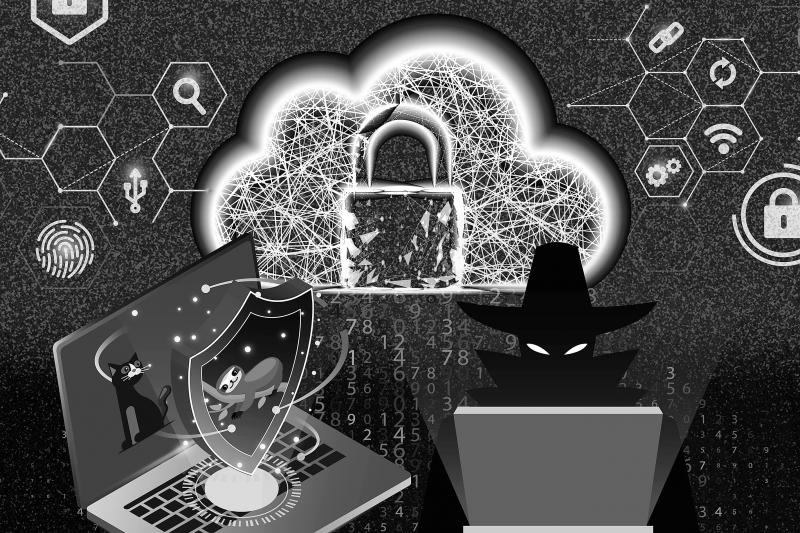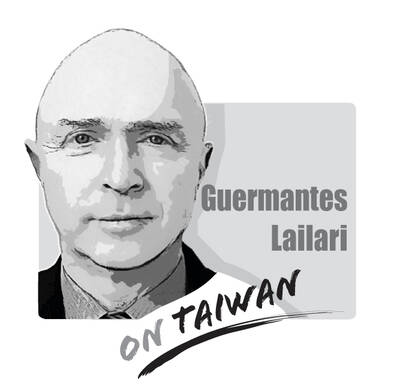For the past decade, artificial intelligence (AI) has been used to recognize faces, rate creditworthiness and predict the weather. At the same time, increasingly sophisticated hacks using stealthier methods have escalated. The combination of AI and cybersecurity was inevitable as both fields sought better tools and new uses for their technology. However, there is a massive problem that threatens to undermine these efforts and could allow adversaries to bypass digital defenses undetected.
The danger is data poisoning: manipulating the information used to train machines offers a virtually untraceable method to circumvent AI-powered defenses. Many companies might not be ready to deal with escalating challenges.
The global market for AI cybersecurity is already expected to triple by 2028 to US$35 billion. Security providers and their clients might have to patch together multiple strategies to keep threats at bay.

Illustration: Louise Ting
The very nature of machine learning, a subset of AI, is the target of data poisoning.
Given reams of data, computers can be trained to categorize information correctly. A system might not have seen a picture of Lassie, but given enough examples of different animals that are correctly labeled by species (and even breed) it should be able to surmise she is a dog. With even more samples, it would be able to correctly guess the breed of the famous TV canine: rough collie.
The computer does not really know. It is merely making statistically informed inference based on past training data.
That same approach is used in cybersecurity. To catch malicious software, companies feed their systems with data and let the machine learn by itself. Computers armed with numerous examples of both good and bad code can learn to look out for malicious software (or even snippets of software) and catch it.
An advanced technique called neural networks — which mimics the structure and processes of the human brain — runs through training data and makes adjustments based on both known and new information.
Such a network need not have seen a specific piece of malevolent code to surmise that it is bad. It has learned for itself and can adequately predict good versus evil.
All of that is powerful, but it is not invincible.
Machine-learning systems require a huge number of correctly labeled samples to start getting good at prediction. Even the largest cybersecurity companies are able to collate and categorize only a limited number of examples of malware, so they have little choice but to supplement their training data. Some of the data can be crowd-sourced.
“We already know that a resourceful hacker can leverage this observation to their advantage,” Giorgio Severi, a doctoral student at Northwestern University, said in a recent presentation at the USENIX Security Symposium.
Using the animal analogy, if feline-phobic hackers wanted to cause havoc, they could label a bunch of photos of sloths as cats, and feed the images into an open-source database of house pets. Since the tree-hugging mammals would appear far less often in a corpus of domesticated animals, this small sample of poisoned data has a good chance of tricking a system into spitting out sloth pics when asked to show kittens.
It is the same technique for more malicious hackers.
By carefully crafting malicious code, labeling these samples as good, and then adding it to a larger batch of data, a hacker can trick a neutral network into surmising that a snippet of software that resembles the bad example is, in fact, harmless.
Catching the miscreant samples is almost impossible. It is far harder for a human to rummage through computer code than to sort pictures of sloths from those of cats.
In a presentation at the Hacks In Taiwan security conference in Taipei last year, researchers Cheng Shin-ming (鄭欣明) and Tseng Ming-huei (曾明慧) showed that backdoor code could fully bypass defenses by poisoning less than 0.7 percent of the data submitted to the machine-learning system.
Not only does it mean that only a few malicious samples are needed, but it indicates that a machine-learning system can be rendered vulnerable even if it uses only a small amount of unverified open-source data.
The industry is not blind to the problem, and this weakness is forcing cybersecurity companies to take a much broader approach to bolstering defenses.
One way to help prevent data poisoning is for scientists who develop AI models to regularly check that all the labels in their training data are accurate.
OpenAI, a research company cofounded by Elon Musk, said that when its researchers curated their data sets for a new image-generating tool, they would regularly pass the data through special filters to ensure the accuracy of each label.
That “removes the large majority of images which are falsely labeled,” a spokeswoman said.
To stay safe, companies need to ensure their data is clean, but that means training their systems with fewer examples than they would get with open source offerings.
In machine learning, sample size matters.
This cat-and-mouse game between attackers and defenders has been going on for decades, with AI simply the latest tool deployed to help the good side stay ahead.
Remember: Artificial intelligence is not omnipotent. Hackers are always looking for their next exploit.
Tim Culpan is a technology columnist for Bloomberg Opinion. Based in Taipei, he writes about Asian and global businesses and trends. He previously covered the beat at Bloomberg News.

Chinese state-owned companies COSCO Shipping Corporation and China Merchants have a 30 percent stake in Kaohsiung Port’s Kao Ming Container Terminal (Terminal No. 6) and COSCO leases Berths 65 and 66. It is extremely dangerous to allow Chinese companies or state-owned companies to operate critical infrastructure. Deterrence theorists are familiar with the concepts of deterrence “by punishment” and “by denial.” Deterrence by punishment threatens an aggressor with prohibitive costs (like retaliation or sanctions) that outweigh the benefits of their action, while deterrence by denial aims to make an attack so difficult that it becomes pointless. Elbridge Colby, currently serving as the Under
The Ministry of the Interior on Thursday last week said it ordered Internet service providers to block access to Chinese social media platform Xiaohongshu (小紅書, also known as RedNote in English) for a year, citing security risks and more than 1,700 alleged fraud cases on the platform since last year. The order took effect immediately, abruptly affecting more than 3 million users in Taiwan, and sparked discussions among politicians, online influencers and the public. The platform is often described as China’s version of Instagram or Pinterest, combining visual social media with e-commerce, and its users are predominantly young urban women,
Most Hong Kongers ignored the elections for its Legislative Council (LegCo) in 2021 and did so once again on Sunday. Unlike in 2021, moderate democrats who pledged their allegiance to Beijing were absent from the ballots this year. The electoral system overhaul is apparent revenge by Beijing for the democracy movement. On Sunday, the Hong Kong “patriots-only” election of the LegCo had a record-low turnout in the five geographical constituencies, with only 1.3 million people casting their ballots on the only seats that most Hong Kongers are eligible to vote for. Blank and invalid votes were up 50 percent from the previous
Japanese Prime Minister Sanae Takaichi lit a fuse the moment she declared that trouble for Taiwan means trouble for Japan. Beijing roared, Tokyo braced and like a plot twist nobody expected that early in the story, US President Donald Trump suddenly picked up the phone to talk to her. For a man who normally prefers to keep Asia guessing, the move itself was striking. What followed was even more intriguing. No one outside the room knows the exact phrasing, the tone or the diplomatic eyebrow raises exchanged, but the broad takeaway circulating among people familiar with the call was this: Trump did